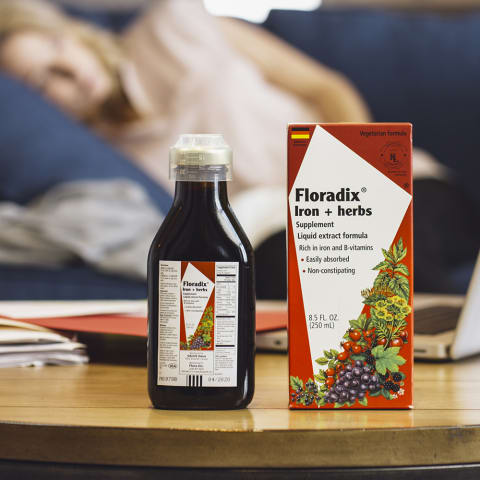Advertisement

The most common and widespread nutritional deficiency in the world is, ironically, easy to miss. It’s the essential mineral iron. According to the World Health Organization, as much as 80 percent of people don’t have adequate iron levels in their bodies. In America alone, 10 million are iron deficient1, half of which have such low levels that it’s caused iron deficiency anemia.

Our bodies need iron to make hemoglobin, the protein in red blood cells that carries oxygen from the lungs and delivers it to the rest of the body, including your muscles and skin, then transports carbon dioxide back to the lungs to be exhaled. We intake iron through food sources—two to three times more from animals than from plants—and supplements. Ferritin+, for example, provides highly soluble iron gluconate, as well as whole food concentrates and co-factor B and C vitamins, to ensure that it is easily absorbed by the body. Plus, it’s gentle on the digestive tract.
Who’s most at risk for dips in iron levels? Women who menstruate—particularly if menstrual periods are heavy—and frequent blood donors are prone to inadequate levels of iron, because losing some blood means losing some iron. Pregnant women are also susceptible to iron deficiency since their iron stores need to serve their own increased blood volume as well as create hemoglobin for both mom and the growing baby. Vegetarians and vegans who don't eat enough iron-rich foods are at a higher risk of low iron levels, too.
The most common telltale signs of low iron are things we all feel every now and then, which is what makes the deficiency somewhat difficult to pinpoint; low energy, difficulty focusing, and generally feeling wiped out are all symptoms. There are also more specific symptoms like pale skin which happens when hemoglobin is low. That’s because hemoglobin is what gives red blood cells their red color—in other words, where your skin gets its vibrancy. There are also the not-so-obvious signs, like the ones below.
1. Swollen tongue
Also known as atrophic glossitis, a swollen and tender tongue that’s expanded to the point that it appears smooth instead of bumpy has been linked2 with cases of iron deficiency anemia.
2. Restless legs
Restless leg syndrome is just what it sounds like: a recurring urge to move your legs due to feelings described as burning, tugging, tingling, or even of insects crawling over your legs. Some research3 has suggested that low iron levels could be related to this phenomenon4.
3. Apathy
Scientists have found5 low iron may even be correlated to neuropsychological effects. Apathy, irritability, and other depressive symptoms have been associated with iron deficiency, even in mild cases.
4. Cold hands and feet
It’s possible that not enough oxygen is getting to your hands and feet if you’re deficient in iron, causing them to feel cold. In fact, it’s one of the more common signs of low iron levels.
5. Craving ice or things that aren’t food
People who are iron deficiency anemic may develop a syndrome called pica, which causes strange cravings to eat items that have no nutritional value, like ice, dirt, clay, or starch. It’s unclear exactly why this happens, but some research suggests that the cravings seem to go away when patients take iron supplements.
We can’t self-diagnose iron deficiency or iron deficiency anemia, so talk with your doctor if you suspect that your levels might be low.


















